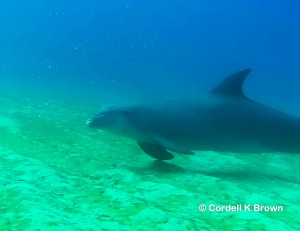Marine Mammal & Sea Turtle Week (Part 2 of a 5-part Series)
With Memorial Day Weekend upon us, summer is unofficially here for New Jerseyans. That means plenty of tourists enjoying shore, sand, surf, and sun – but it also means other types of annual summer visitors to our coast: bottlenose dolphins, sea turtles, and whales. However, what may be inspiring sightings from a healthy distance can become tragic encounters when marine animals become stranded or entangled in nets.
This story marks the second of five blog stories spotlighting New Jersey’s marine mammals and sea turtles – and educating people how to help animals in need, rather than make a bad situation worse.
Part 1 yesterday revealed the bottlenose dolphin die-off striking the Eastern Seaboard. Part 3, on Wednesday, will look at how people can safely help stranded wildlife. Part 4, on Thursday, will investigate the fascinating condition of cold-stunned sea turtles. And Part 5, on Friday, will reveal the importance of reporting sightings – both for live or dead marine mammals.
MARINE MAMMAL & SEA TURTLE WEEK: Ask the Experts – NOAA’s Mendy Garron sheds light on bottlenose dolphin die-off
By Stephanie Feigin, Program Coordinator
The National Oceanic and Atmospheric Association (NOAA) declared an unusual Mortality Event (UME) in early July 2013 for bottlenose dolphins along the Atlantic Coast. There have been an elevated number of strandings in New York, New Jersey, Delaware, Maryland, Virginia, North Carolina, South Carolina, Georgia and Florida. These strandings have ranged from a few live animals to mostly dead animals and many very decomposed. These dolphins usually show lesions on their mouth, skin, joints or lungs.

In New Jersey, there have been 135 documented strandings from July 1, 2013 – April 20, 2014. Research attributes this UME to cetacean morbillivirus, a naturally occurring virus in marine mammal populations. It suppresses the immune system and affects the brain and lungs, and causes the death of the animal from other secondary infections. This virus has now affected about 50% of the coastal migratory bottlenose dolphin stock leading to the classification of “Depleted” for this stock under the Marine Mammal Protection Act. I spoke with Mendy Garron, the Marine Mammal Response Coordinator for NOAA Fisheries, about this dolphin die-off.
CWF: What is the unusual mortality event that is occurring for bottlenose dolphins?
MendyGarron, NOAA: In July 2013, NOAA’s Marine Mammal Stranding Network partners documented an increase in bottlenose dolphin strandings occurring in the Mid-Atlantic region (New York through Virginia). Since that time, bottlenose dolphin strandings have remained elevated.
CWF: How widespread is this event? And how is it affecting the New Jersey population of bottlenose dolphins?
MendyGarron, NOAA: The increase in bottlenose dolphin stranding events has extended down through Florida. Coastal migratory bottlenose dolphins migrate south during the winter months and are located off the coast of NC, SC, GA and FL during the winter. In late spring and early summer, the dolphins will migrate back up north and be found in coastal waters of mid-Atlantic states (NY through NC).
Research efforts are underway to understand the impacts the die-off will have on the coastal bottlenose dolphin population, including those that are found in New Jersey waters.
CWF: What are the results, so far, of your investigation into this UME?
MendyGarron, NOAA: This Unusual Mortality Event (UME) has been attributed to an outbreak of cetacean morbillivirus. More information on morbillivirus can be found on the following website:
http://www.nmfs.noaa.gov/pr/health/mmume/midatldolphins2013.html
Morbillivirus is highly contagious among animals in an infected population. The virus spreads through inhalation of respiratory particles or direct contact between animals. Animals can also be exposed to the virus through other entryways such as the eyes, mouth, stomach, skin wounds, and urogenital tract. Secondary or co-infections caused by fungus, bacteria, parasites and protozoa have also been documented in some animals.
CWF: How can we help protect the New Jersey population?
MendyGarron, NOAA: Bottlenose dolphins are faced with many negative impacts in their daily lives including, but not limited to: fishery interactions, boat strikes, and contamination. There are many things that can be done to help protect these animals. Here is a link to the NOAA Fisheries Service regional website that houses information on responsible wildlife viewing practices for dolphins, as well as guidance for recreational fishermen and boaters: http://www.nero.noaa.gov/Protected/mmp/
An informational video can also be found at: http://www.dontfeedwilddolphins.org/
Discover more from Conserve Wildlife Foundation of NJ
Subscribe to get the latest posts sent to your email.